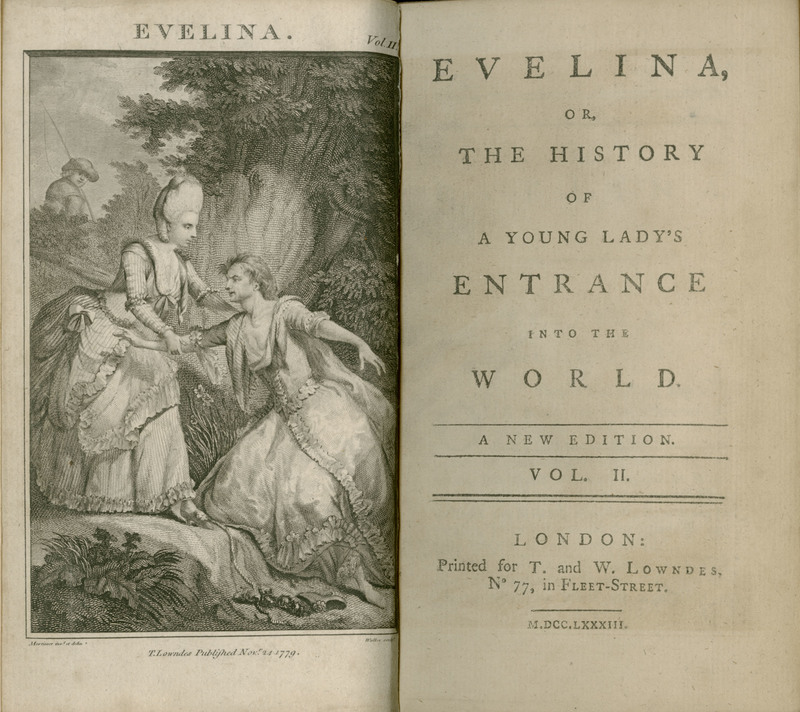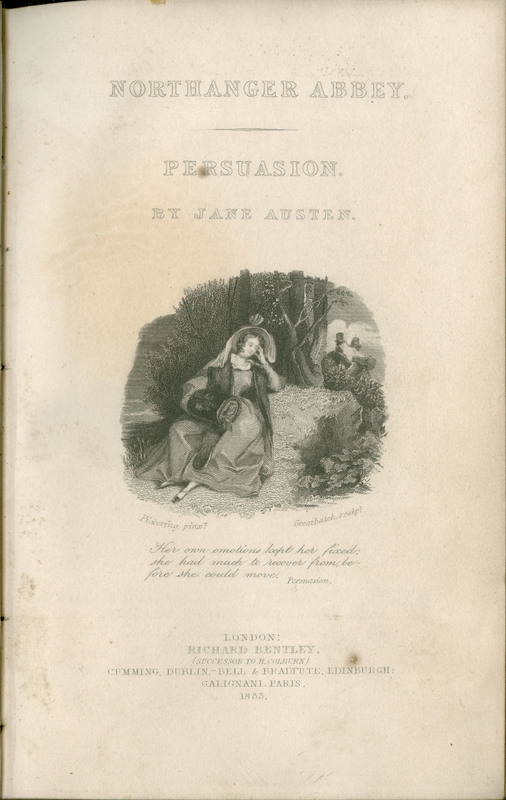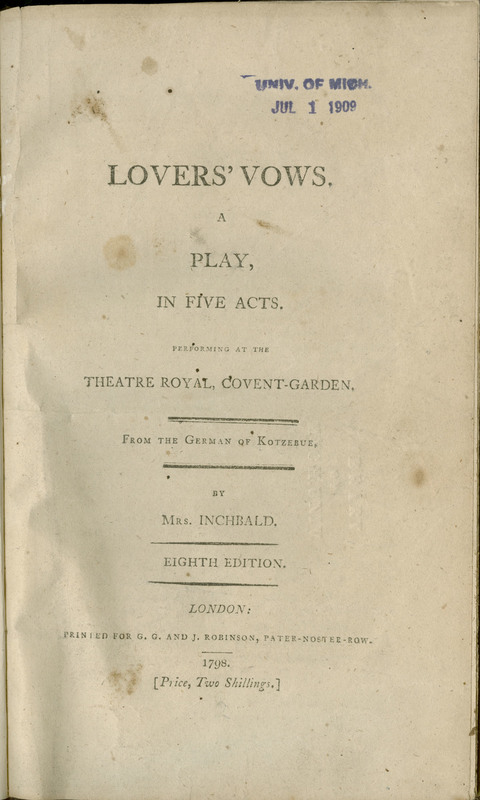Novels and Plays
This three-volume epistolary novel explores the development of a young woman’s societal education in eighteenth-century England through the comedic use of embarrassment and social faux pas. Evelina explores many of the same subjects that Jane Austen later became famous for, though it precedes Austen's first published novel, Sense and Sensibility, by thirty-three years. Burney’s influence on Austen can be seen in the later novelist’s initial attraction to the epistolary method, observed in Austen’s early works, such as the Juvenilia, and in the rough drafts of her later novels.
The frontispiece of Volume II depicts the aftermath of Captain Mirvan and Sir Clement Willoughby’s cruel joke on Madame Duval, where a concerned Evelina aids a distressed and disheveled Madame Duval. It was designed by John Hamilton Mortimer, an eighteenth-century painter, who produced three images to accompany the fourth edition of Evelina. Mortimer completed the designs just before his death in 1779, and William Walker then produced the etchings as seen in the printed editions. Mortimer’s work was commissioned by Thomas Lowndes, a publisher who operated at No. 77 Fleet Street where the the fourth edition of Evelina was printed. Both Burney and Jane Austen had their work printed on Fleet Street, which was for centuries the center of British publishing industry.
(Carly Gross, Taylor Moses, Michaela Tanksley)
The Monk by M.G. Lewis was a popular gothic novel that anticipated future novels, including Austen’s Northanger Abbey. The gothic novel’s classic traits consist of distressed heroines, settings in medieval architecture and monasteries in distant lands, and sensational plots. These books were highly popular, and were regular staples of the lending libraries of Austen’s era. The Monk and other gothic novels’ unrealistic plot and characters were significant for Jane Austen’s development of a more realistic style. In Northanger Abbey she parodies gothic conventions. Her heroine, Catherine Morland, fuses her reality with that of the gothic. She naively aspires to be a gothic heroine, even though they often endured endless horrors and--like Agnes and Antonia from The Monk--met violent deaths. At the same time, Austen borrows some of the features of the gothic novel, setting her book in a former abbey.
(Alexis Low, Kaitlyn Mann)
Playwright Elizabeth Inchbald’s Lover’s Vows first made its debut in 1798 at the Covent Gardens of London’s Royal Opera house. It was adopted from German dramatist August von Kotzebue's Das Kind der Liebe, and published the same year it was performed. The work remains the only play used in an Austen novel: the young characters in Mansfield Park choose to stage the play at home.
Lover’s Vows would have been strange choice of play for a home staging in Austen’s time, especially when performed by the younger characters in Mansfield Park. It is a drama with occasional comedy; the story concerns a dead woman’s illegitimate son trying to make his way in upper-class society and the budding romance between a blossoming woman and a priest. The play was seen as scandalous, for not only did it focus on romantic scenes between unmarried couples, but it also suggested necessary social reforms along sexual, economic, and moral lines. Austen utilized this scandalous reputation to shed light on her characters.
The edition of Lover’s Vows before you may have been almost identical to the one Austen used as she read over the script in her writing of Mansfield Park. If you seek to put yourself in Austen’s shoes, then go no further and glimpse at the same script that she, or Mary Crawford, may have looked upon.
(Sarah Ovresat, Dylan Summers)

Education and Conduct




